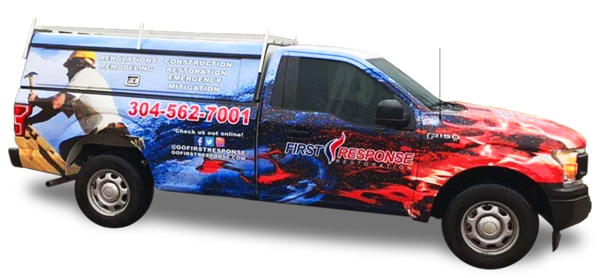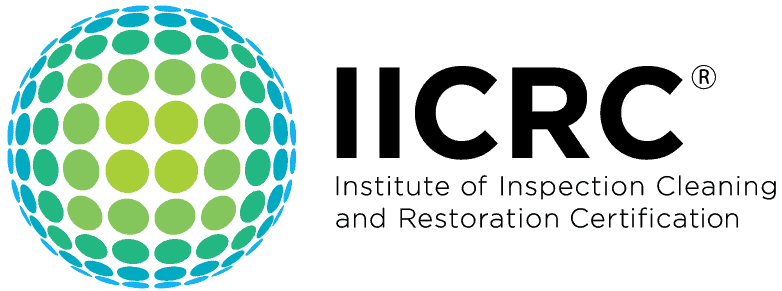When faced with water damage in your home, it’s important to act quickly and effectively to minimize the potential harm. However, there are certain mistakes that you should avoid making when dealing with water damage. By understanding what not to do, you can protect your home and preserve its integrity. In this article, we will discuss the common water damage mistakes and provide you with valuable insights on how to handle water damage situations.
Key Takeaways:
- Acting promptly is essential when dealing with water damage in your home.
- Ignoring the source of the water damage can lead to recurring problems. Identify and address the root cause.
- Delaying the cleanup process can result in mold growth and further damage. Take immediate action in the cleanup.
- Properly drying out the affected areas is crucial to prevent mold growth and structural issues.
- Avoid attempting DIY repairs without professional assessment. Seek the expertise of water damage restoration professionals.
By avoiding these water damage mistakes and following the right steps, you can protect your home from further harm and ensure the safety of your loved ones. Stay informed and take the necessary precautions to mitigate the effects of water damage.
Don’t Ignore the Source of Water Damage
When faced with water damage, it’s crucial to address the source of the problem promptly. Ignoring the source can lead to further damage and potential reoccurrence in the future. Whether it’s a leaky pipe, a malfunctioning appliance, or a damaged roof, identifying and fixing the root cause is essential for effective water damage restoration.
By identifying the source of water damage, you can prevent it from causing more harm and avoid costly repairs down the line. It’s recommended to inspect the affected area thoroughly to determine the exact source. Look for signs of leaks, water stains, or dampness, and trace them back to their origin.
Leaky pipes are a common source of water damage. Check your plumbing system for any visible leaks or signs of water accumulation. Inspect faucets, showerheads, and toilets for leaks as well. If you notice any abnormalities, it’s crucial to fix them immediately to prevent further water damage.
Malfunctioning appliances, such as dishwashers, washing machines, or refrigerators, can also cause water damage if not properly maintained. Regularly inspect these appliances for leaks, loose fittings, or damaged hoses, and repair or replace them as necessary.
In some cases, the source of water damage may be external, such as a heavy rainstorm or flooding. Ensuring your home has proper drainage systems, such as gutters and downspouts, is essential for directing water away from your property. Regularly clean and maintain these systems to prevent water from seeping into your home.
Remember, identifying and addressing the source of water damage is the first step in effective restoration and prevention. Don’t ignore any signs of water damage and take immediate action to mitigate the effects. By doing so, you can protect your home and belongings from further harm.
| Common Sources of Water Damage | How to Identify |
|---|---|
| Leaky pipes | Look for water stains, dampness, or pooling water near pipes |
| Malfunctioning appliances | Inspect hoses, fittings, and the surrounding area for leaks or moisture |
| Damaged roof | Check for water stains, discoloration, or visible damage on the ceiling |
| External factors (rain, flooding) | Assess the surrounding area for signs of excess water accumulation |
Avoid Delaying Action in Water Damage Cleanup
Taking immediate action in water damage cleanup is crucial. When faced with water damage in your home, it’s essential to act swiftly to minimize the potential for further damage. Delaying the cleanup process can lead to the growth of mold and cause additional harm to the structure of your home.
By addressing the water damage promptly, you can prevent long-term consequences and save yourself from costly repairs. The longer water is allowed to sit, the more it seeps into walls, floors, and furniture, causing irreversible damage. Mold can begin to grow within 24-48 hours, posing health risks and further complicating the cleanup process.
To efficiently clean up after water damage occurs, follow these steps:
- Ensure your safety: Before entering the affected area, turn off the power supply if it’s safe to do so. Wear appropriate protective gear, such as gloves and boots, to avoid exposure to contaminated water.
- Stop the water source: If you haven’t already, identify and stop the source of the water damage. This could involve shutting off the main water supply or fixing a leaky pipe.
- Remove standing water: Use a wet/dry vacuum or buckets to remove as much standing water as possible. The faster you can eliminate the excess water, the better.
- Dry out the area: Use fans, dehumidifiers, and open windows to promote air circulation and aid in the drying process. Remove wet materials, such as carpets and furniture, to prevent further water damage.
- Disinfect and clean: Thoroughly clean and disinfect all surfaces affected by the water damage to prevent bacterial growth.
- Inspect for hidden damage: Check hidden spaces, such as walls and ceilings, for signs of water damage or mold growth. Hiring a professional for a comprehensive inspection is advisable to ensure all areas are properly assessed.
Remember, time is of the essence when it comes to water damage cleanup. Acting promptly can help minimize the potential for mold growth, structural damage, and other complications. By following these steps, you can efficiently clean up after water damage and restore your home to its pre-damaged condition.
Never Neglect the Importance of Drying Out
After experiencing water damage, it is crucial to prioritize the proper drying out of affected areas. Neglecting this step can lead to mold growth and structural issues, which can have severe consequences for your home and its occupants.
Properly drying out the affected areas is vital to eliminate excess moisture and prevent the growth of mold and mildew. Mold can not only cause significant damage to your property but also pose health risks to you and your family. By ensuring thorough drying, you can minimize these risks and protect your home’s structural integrity.
To achieve effective drying, it is essential to use proper techniques and tools. Here are some key guidelines to follow:
- Remove standing water: Start by removing any standing water using a wet/dry vacuum or mop. This will help eliminate excess moisture and prevent further damage.
- Use dehumidifiers: Dehumidifiers are invaluable in speeding up the drying process by removing moisture from the air. Place dehumidifiers strategically in the affected areas to maximize their efficiency.
- Ensure proper ventilation: Good airflow is crucial for drying out the affected areas. Open windows and use fans to increase air circulation. This will help expedite the evaporation process.
- Employ moisture meters: Moisture meters are handy tools that can measure the moisture content in materials. Use them to monitor the progress of the drying process and ensure that moisture levels are within acceptable limits.
By following these proper drying techniques and utilizing the right tools, you can effectively dry out the affected areas and minimize the risk of mold growth and structural issues.
Avoid DIY Repairs Without Professional Assessment
When faced with water damage, it’s natural to want to take immediate action and try to fix things yourself. However, attempting DIY repairs without professional assessment can actually exacerbate the situation and lead to more problems down the line. Here, we’ll shine a light on the risks involved in DIY repairs and explain why it’s crucial to involve professionals in the water damage restoration process.
While your DIY enthusiasm is commendable, it’s important to acknowledge that water damage restoration requires specialized knowledge and expertise. Without a proper assessment from professionals, you may not fully understand the extent of the damage or the underlying issues that caused it.
Professionals in water damage restoration possess the experience and training necessary to accurately assess the damage and identify any hidden concerns. They can uncover problems that may not be immediately apparent to an untrained eye, such as structural damage or potential mold growth.
By relying on professionals, you are ensuring that the restoration process is carried out correctly and efficiently. They have access to advanced equipment and techniques that can effectively mitigate the damage, prevent further deterioration, and restore your home to its pre-damaged state.
Additionally, involving professionals in the restoration process not only ensures the safety and integrity of your home but also saves you time and energy. DIY repairs can be time-consuming and physically demanding, which can be overwhelming, especially if you’re dealing with significant water damage.
Ultimately, investing in professional assessment and assistance is a wise decision when it comes to water damage restoration. Their expertise, specialized equipment, and in-depth knowledge will enable them to address the root cause of the issue and provide you with a comprehensive solution.
Remember, water damage restoration is not just about fixing visible problems; it’s about safeguarding your home from potential long-term consequences. So, put your trust in professionals and let them handle the restoration process while you focus on getting your life back on track.
Conclusion
In this article, we’ve explored the vital steps to take when dealing with water damage at home. By avoiding common mistakes and acting promptly, you can protect your home from further harm and ensure the well-being of your loved ones. Remember, the source of water damage should never be ignored. Identifying and addressing the root cause is crucial to prevent reoccurrence.
Additionally, delaying action in water damage cleanup can lead to mold growth and structural damage. Take immediate steps to mitigate the effects of water damage, including properly drying out affected areas. Neglecting this crucial step can have serious consequences for your home’s integrity.
While it may be tempting to attempt DIY repairs, seeking professional assessment for water damage restoration is essential. Professionals have the expertise and knowledge to identify hidden damages and execute appropriate repairs, ensuring the safety and long-term well-being of your home. By acting smartly and efficiently, you can safeguard your property and minimize the impact of water damage.
FAQ
What are some common water damage mistakes to avoid at home?
When dealing with water damage at home, it’s crucial to avoid certain mistakes that can worsen the situation. These mistakes include ignoring the source of water damage, delaying action in water damage cleanup, neglecting the importance of drying out, and attempting DIY repairs without professional assessment.
Why shouldn’t I ignore the source of water damage?
Ignoring the source of water damage can lead to further damage and potential reoccurrence. It’s important to identify and address the root cause, such as a leaky pipe or a malfunctioning appliance, to prevent any ongoing issues.
How important is immediate action in water damage cleanup?
Taking immediate action in water damage cleanup is crucial. Delaying the cleanup process can result in mold growth and further structural damage. It’s essential to act promptly to mitigate the effects of water damage.
Why is it important to properly dry out the affected areas after water damage?
Properly drying out the affected areas is necessary to prevent mold growth and structural issues. Neglecting this step can have severe consequences. We’ll discuss effective drying techniques and tools you can use to ensure a thorough dry-out process.
Can I attempt DIY repairs without professional assessment?
While taking immediate action is important, attempting DIY repairs without professional assessment can lead to further damage. It’s crucial to involve professionals in the water damage restoration process to ensure the safety and integrity of your home.

















